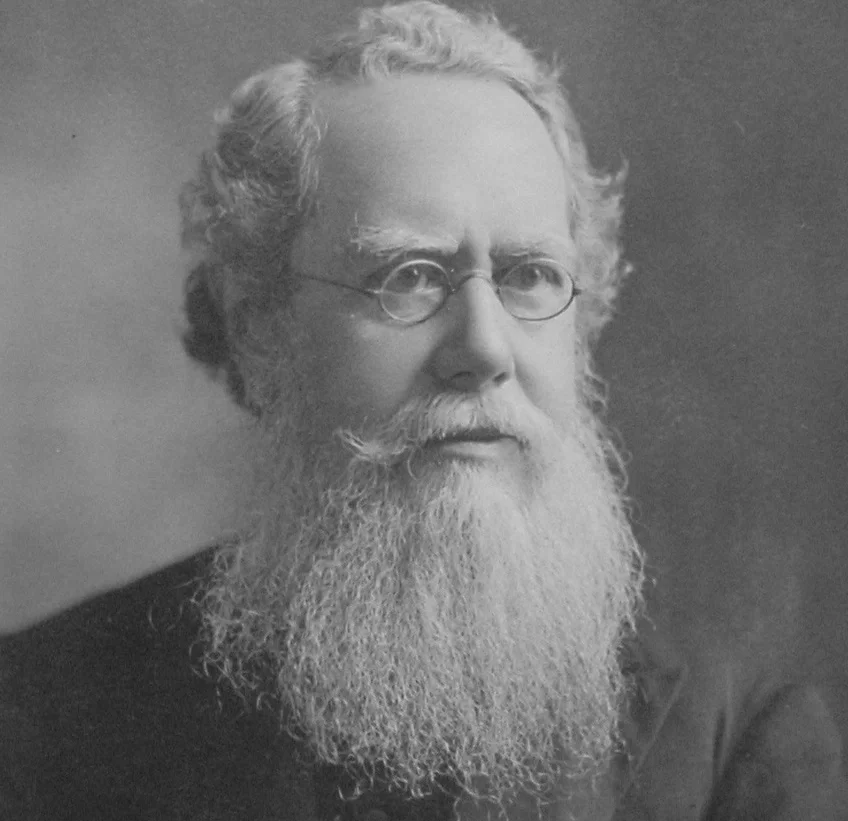Hudson Taylor (1832–1905) is one of the most beloved persons in the history of Christian missions. Taylor’s pioneering work as a frontier missionary to China altered Christian outreach in the nineteenth century. He founded the China Inland Mission (CIM), which was instrumental in spreading Christianity across China’s vast and inaccessible regions.
Hudson Taylor Biography

Hudson Taylor was born May 21, 1832, in Barnsley, England. He was the son of a chemist and was raised in a Christian home that emphasized the value of faith. Taylor had a strong interest in missionary work from an early age, which was fueled by his father’s stories about China and the need for Christian outreach there. At the age of 17, he became a Christian and felt a tremendous desire to serve as a missionary in China.
SEE MORE ARTICLES
Hulk Hogan Biography, Wrestling Career, Controversies, Death and Legacy
Shehu Sani Biography, Age, Legacy, Politics and Public Service
Oba Sikiru Kayode Adetona Biography: Legacy of the Awujale of Ijebuland
Hulk Hogan Legacy: 7 Things You May Not Know About the WWE Hall of Famer
Career
Hudson Taylor sailed to China in 1854, where he encountered various hurdles, including cultural differences and health issues. In 1865, he created the China Inland Mission (CIM) to reach China’s interior regions rather than only its coasts. Taylor took an unusual approach, adopting Chinese attire and customs to better connect with the locals. His dedication to the Chinese people and dogged pursuit of evangelism resulted in the development of various mission stations across the country.
Hudson Taylor had a tremendous impact on Christian missions in China. By the time he died in 1905, the CIM had over 800 missionaries and had helped establish thousands of churches. His emphasis on prayer and trusting in God’s provision inspired many future missionaries. Taylor’s life and work continue to have an impact on missionary techniques and approaches to cross-cultural ministry today, cementing his place in Christian missions history.
Hudson Taylor launched the China Inland Mission (CIM) in 1865, a pioneering organization dedicated to spreading the Gospel throughout China’s interior. Unlike many of his contemporaries, who concentrated on coastal cities, Taylor stressed the need to evangelize rural and disadvantaged communities. Under his leadership, the CIM recruited missionaries who embraced Chinese culture, including local attire and traditions. This cultural sensitivity facilitated deeper ties with the Chinese people, considerably increasing the mission’s efficacy.
Hudson Taylor’s missionary activities resulted in a significant increase in the Christian community in China. By the time he died in 1905, the CIM had deployed over 800 missionaries and built over 125 schools, medical facilities, and churches throughout the country.
Taylor’s emphasis on prayer and reliance on God for financial support led to a new approach to missionary finance, encouraging donors to trust in divine provision. His legacy continues to have an impact on missionary practices around the world, highlighting the value of cultural knowledge and local engagement in evangelization.
Hudson Taylor, the founder of the China Inland Mission, transformed missionary work with his unique tactics that prioritized cultural adaptation. He believed that to communicate with the Chinese people effectively, missionaries should adapt their habits and clothes.
This strategy not only allowed for stronger interactions with the local populace but also established a precedent for future missions to stress cultural sensitivity. Taylor’s emphasis on learning and respecting local cultures has had a great impact on current missionaries, inspiring them to immerse themselves in the communities they serve.
One of the most important aspects of Hudson Taylor’s ministry was his unwavering faith and reliance on God. Taylor thought that a close, personal relationship with God was required for effective service. He frequently emphasized the value of prayer and sought to model a life based on spiritual guidance. Taylor famously declared, “The Great Commission is not an option to be considered; it is a command to be obeyed.” This conviction prompted him to rely on God for both his personal necessities and the financial support of his missionary activity in China.
Hudson Taylor transformed missionary work with his unique methods and emphasis on cultural adaptation. By advocating for missionaries’ incorporation into local communities, he built a model that emphasized knowing and honoring local traditions.
This notion of “becoming one with the culture” has had a significant impact on current missionary techniques, encouraging a more comprehensive and respectful engagement with other cultures. Today, many mission organizations follow Taylor’s lead, aiming for a contextualized presentation of the Gospel that resonates strongly with local populations.
The creation of the China Inland Mission (CIM) in 1865 was a watershed moment in Christian missions. Taylor’s desire to reach China’s unreachable regions prompted numerous missionaries to follow suit, resulting in a significant surge in missionary activity throughout Asia. The CIM’s legacy lives on, since it established the framework for countless mission groups that continue to function worldwide. Taylor’s drive to reach out to isolated locations has resulted in millions of people accepting Christianity, demonstrating his long-lasting impact on the propagation of the faith.
Hudson Taylor’s persistent faith in the power of prayer and divine provision has had a lasting impact on Christian spirituality. His life demonstrated a great reliance on God, inspiring modern Christians to prioritize faith in their daily lives. Taylor’s writings and teachings on prayer have sparked a movement that sees personal and community prayer as essential to spiritual growth and mission effectiveness. Many modern churches and organizations have adopted Taylor’s views, resulting in a revived emphasis on prayer as an essential component of Christian life and outreach.
Hudson Taylor Movies
- Hudson Taylor, starring Michael Hickman (1981)
- Hudson Taylor, Missionary to China, starring Douglas B. Whitley Jr (2015)
Hudson Taylor Books
- Hudson Taylor’s Spiritual Secret by Dr. Howard Taylor (2009 – Moody Classics)
- Hudson Taylor: An Autobiography by James Hudson Taylor (2010)
- Hudson Taylor: Deep in the Heart of China by Janet and Geoff Benge (1998 – Christian Heroes: Then & Now)
- Hudson Taylor by J. Hudson Taylor (1987 – Men of Faith)
- Hudson Taylor: A Man In Christ by Roger Steer (2005 – Missionary Life Stories)
- Hudson Taylor: Could somebody pass the salt? by Catherine MacKenzie (2012 – Little Lights—Kids Book)
- Hudson Taylor: In Early Years—The Growth of a Soul by Dr. Howard Taylor (1988)
- Hudson Taylor and the China Inland Mission: The Growth of a Work of God by Dr. Howard Taylor (1996)
- Hudson Taylor: Gospel Pioneer to China by Vance Christie (2011)
- It is Not Death to Die: A New Biography of Hudson Taylor by Jim Cromarty (2014)
- Hudson Taylor on Spiritual Secrets by Lance Wubbels (2002)
Personal Life
Taylor married Maria Jane Dyer in 1858, the orphaned daughter of Rev. Samuel Dyer of the London Missionary Society, a pioneer missionary to the Chinese in Penang, Malaysia. Hudson met Maria in Ningbo, where she lived and worked at a girls’ school founded by Mary Ann Aldersey, one of the first female missionaries to China.
While living in Ningbo, the Taylors were married and cared for an adopted child named Tianxi. They had their own kid, who died in late 1858. Their first surviving child, Grace, was born in 1859. Shortly after her birth, the Taylors took over all operations at the Ningbo hospital previously administered by William Parker. On February 14, 1860, he addressed a letter to his sister Amelia Hudson Taylor.
In 1861, Herbert, their second child, was born in London. The Taylors had three more children: Frederick in 1862, Samuel in 1864, and Jane, who passed away at birth in 1865.
Charles, the family’s third child, was born in 1868. In 1870, Taylor and his wife made the painful choice to send their three surviving children, Bertie, Freddie, and Maria, back to England, along with Emily Blatchley, who was caring for them. Samuel had passed away earlier that year. Noel was born in July, but two weeks later, due to Maria’s incapacity to feed him, he passed away from malnutrition and deprivation.
Maria passed just a few days later; cholera was listed as the official cause of death. Her passing rocked Taylor, and when his health started to worsen in 1871, he returned to England later that year to rest and attend to business matters.
Jane Elizabeth Faulding, a fellow missionary since 1866, was Taylor’s wife back in England. In late 1872, Hudson and “Jennie” sailed back to China on the MM Tigre. In 1873, Jennie gave birth to a boy and a girl who were stillborn while they were in Nanjing. The mission secretary and Blatchley died two years later, forcing the Taylors to return to England once more.
Taylor was nearly crippled during the winter of 1874 and 1875 after falling on a riverboat in China. Taylor boldly made a plea for 18 additional people to join the work despite this debilitating physical handicap.
When he eventually recovered, Jennie stayed with the kids, which included the orphaned daughter of fellow missionary George Duncan, a daughter named Amy, and a baby son named Ernest Hamilton. Hudson Taylor and the eighteen missionaries who were asked returned to China in 1876. In the meantime, Benjamin Broomhall, who had wed Hudson’s sister Amelia, served as General Secretary of the China Inland Mission in England.
Three of the brothers in the well-known cricketing Studd family converted and became devout Christians as a result of Hudson’s evangelical work in England; Charles Studd joined the Cambridge Seven, other converts from Cambridge University, to serve as missionaries in China.
Maria, the sole surviving daughter of Hudson and Maria, passed away in Wenzhou in 1897, leaving behind her missionary husband, John Joseph Coulthard, and four young children. Throughout her brief life, she had played a significant role in converting a large number of Chinese women to Christianity.
from GistReel https://ift.tt/ZuNFLaT
via IFTTT


0 Comments
Post a Comment